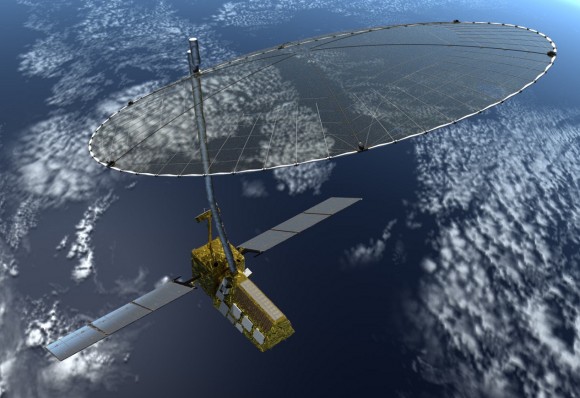
In Toronto yesterday (September 30, 2014), NASA administrator Charles Bolden and India’s space agency chairman K. Radhakrishnan signed two documents to launch a U.S.-India satellite mission to observe Earth and establish a pathway for future joint missions to explore Mars. Both NASA and India’s space agency – called the Indian Space Research Organization (ISRO) – placed spacecraft in orbit around Mars during this past month. NASA’s Mars Atmosphere and Volatile EvolutioN (MAVEN) spacecraft arrived at Mars September 21, and ISRO’s Mars Orbiter Mission (MOM) – the first Indian spacecraft to orbit Mars – arrived September 23.
The two space agency leaders were attending the International Astronautical Congress in Toronto when they met to discuss and sign a charter that establishes a NASA-ISRO Mars Working Group. This group will meet once a year to plan cooperative activities related to future Mars missions. In addition, the two leaders signed an international agreement that defines how the two agencies will work together on the NASA-ISRO Synthetic Aperture Radar (NISAR) mission, an Earth-orbiting mission targeted to launch in 2020. NASA Administrator Charles Bolden said:
The signing of these two documents reflects the strong commitment NASA and ISRO have to advancing science and improving life on Earth. This partnership will yield tangible benefits to both our countries and the world.
NASA said the joint Mars Working Group will seek to:
… identify and implement scientific, programmatic and technological goals that NASA and ISRO have in common regarding Mars exploration.
One of the working group’s objectives will be to explore potential coordinated observations and science analysis between MAVEN and MOM, as well as other current and future Mars missions.
NASA and Indian scientists have a long history of collaboration in space science. They have been cooperating under the terms of a framework agreement signed in 2008.
Read more from NASA about cooperation between the U.S. and India in space

Bottom line: While meeting in Toronto this week, NASA Administrator Charles Bolden and K. Radhakrishnan, chairman of the Indian Space Research Organization (ISRO), signed agreements for increased cooperation between the U.S. and India’s space agencies. A NASA-ISRO Mars Working Group will meet yearly to discuss current and future Mars missions and work together on the NASA-ISRO Synthetic Aperture Radar (NISAR) mission, an Earth-orbiting mission targeted to launch in 2020.











